- More More
- Blog
- Inspire me
- Groups
- Offers More
- Dive Courses More
- Liveaboards
More

Liveaboard Trips
On-board accommodation offering the opportunity to live right over the dive sites and to experience secluded dives...
Diving regions...
- LATEST AVAILABILITY BY REGION
- Red Sea availability
- Maldives availability
- Indonesian availability
- Socorro Mexico availability
- Galapagos availability
- ALL LIVEABOARD DIVING REGIONS
- Bahamas
- Bikini Atoll
- Caribbean
- Cocos Island
- Destinations
MoreDIVING REGIONS...
Our Top destinations....Why not try....
Find a trip
- Resort
- Liveaboard
Blue Holes, Wrecks & Marine Parks in Malta & Gozo

8 Jul 2024
Malta, and its little neighbours, Gozo & Comino, have been ‘go to’ scuba destinations since the early 90s and had an active diving community long before that. Malta is the shore diving location of Europe, if not globally, and the passionate diving industry experts who serve these islands are the ones to thank for the facilities it has today. During my recent visit, I had the opportunity to experience both the incredible dive sites and the amazing people behind getting divers in the water.
Before we get cracking, I want to cover local pronunciation to save anyone else the embarrassment of ordering a Cisk beer and pronouncing it ‘Sisk’. In Maltese, ‘c’ is ‘ch’ and ‘x’ is ‘sh’. You can now walk into any Maltese bar and proudly order a pint of Cisk and tell them you’re staying in Xlendi with full confidence.
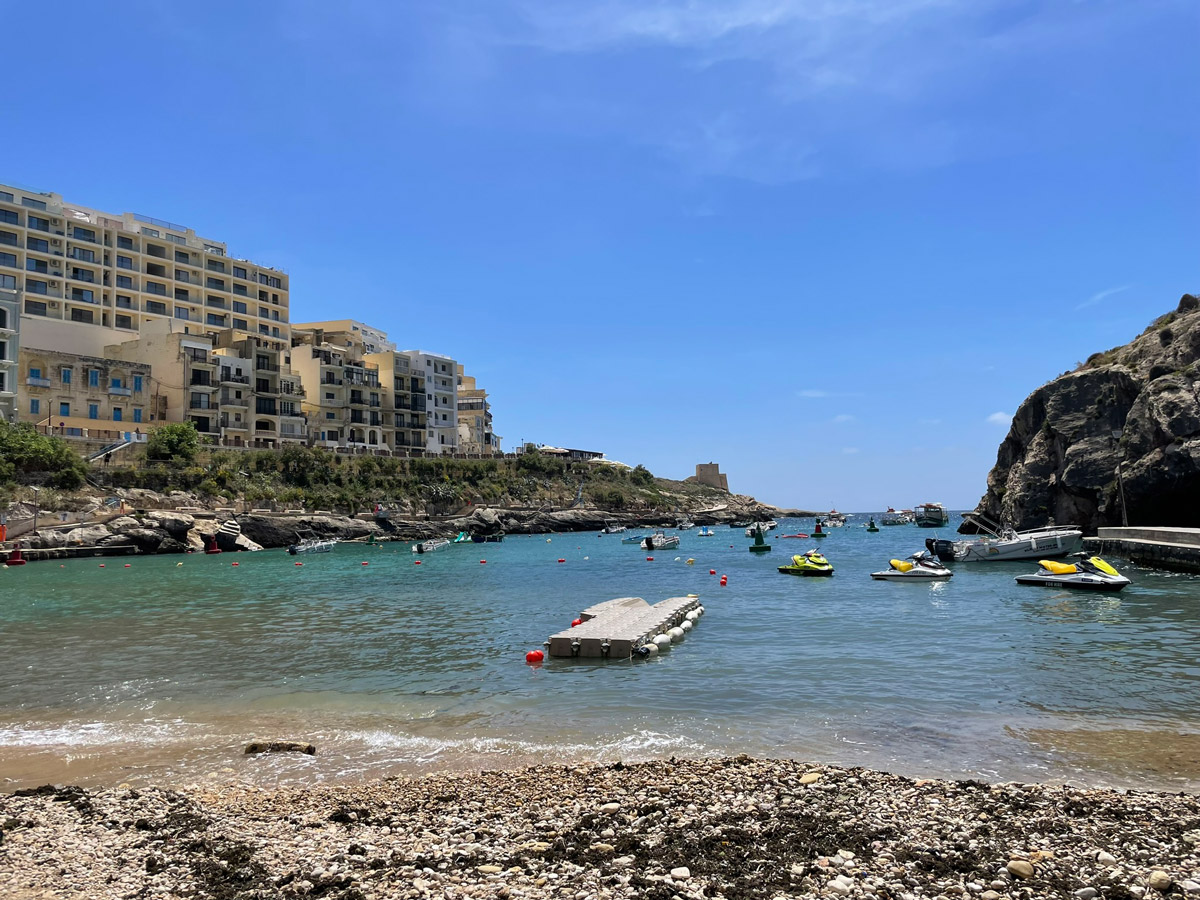
Flying into Malta is simple from the UK; there are options with both charter and scheduled airlines. On landing, my first stop was St Paul's Bay, on the north-western side of the island, which offers spectacular sunsets. There I would be diving with our long-time partners Maltaqua. St Paul's Bay is a bustling town with restaurants, cafés, and bars, and the National Aquarium, which is housed in the Bugibba. I know I sound mad, recommending this to divers, but the food and ambience are lovely, so it's well worth a visit. Sands self-catering apartments are situated around the corner from the dive centre, about a 10-minute walk from the seafront. The Doubletree is wonderful for those who want a catered option, whereas Villa Michael is ideal for small groups and families who want a seafront location and to be in the midst of the action.
Now back to the diving, one of the main diving areas in Malta is the Cirkewwa (Chir-kehwa) Marine Park. This is right on the northern tip, tucked away around the corner from the ferry terminal. This area was Malta’s first marine park and has been heavily advocated for by the Maltese diving industry. In return, facilities have been provided by the government to not only make diving more accessible, but also safer, cleaner, and less environmentally impactful. Malta’s rocky landscapes can be tricky underfoot, but here steps have been discreetly cut into the entry/exit points, railings and hand-support points have been added, there are wide concrete benches to assist in kitting up, there are dive maps to help with briefings, and there are even toilets, showers, and an excellent snack van.
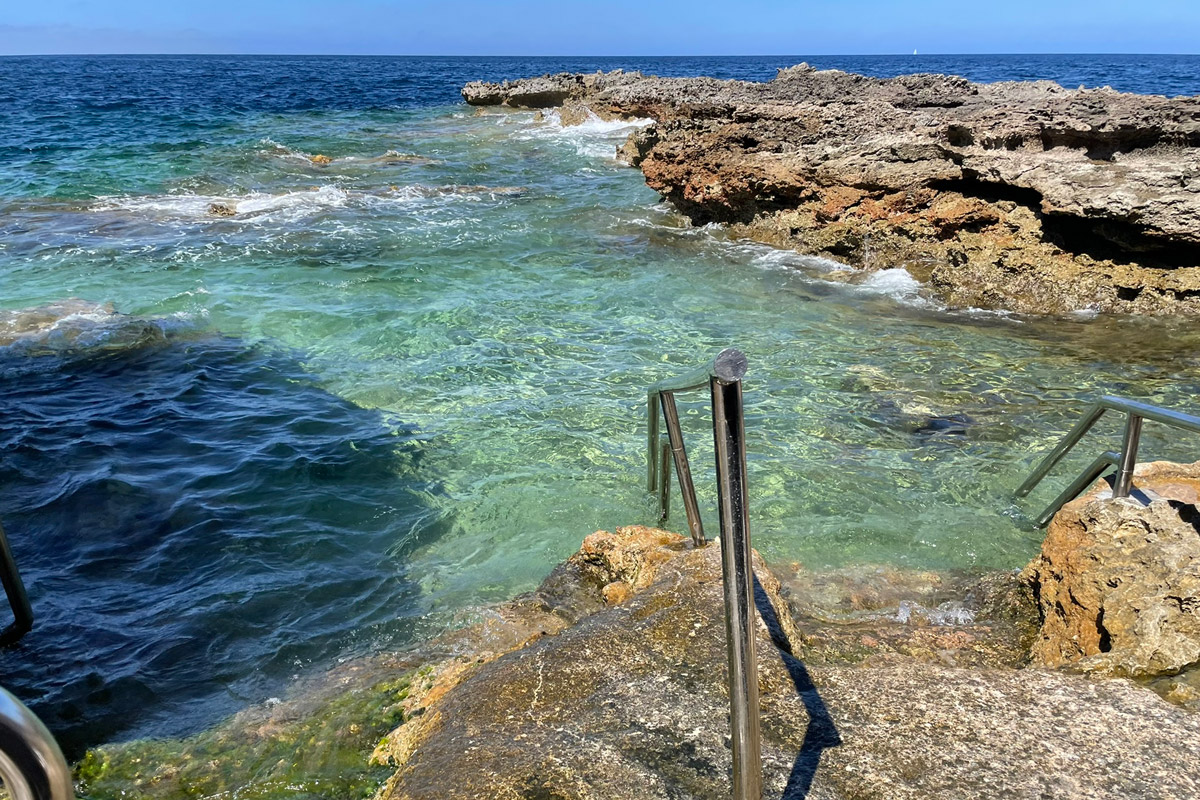
Housing the wrecks of the P29 and the Rozi tugboat, the training area of Susie’s Pool and the beautiful geological feature of the Cirkewwa Arch, this area alone has enough sites for a few days of diving and the facilities make diving here a vastly more enjoyable experience. The Maltaqua team were incredibly knowledgeable and patient with me, guiding me through not only the dive but entry and exit techniques too.
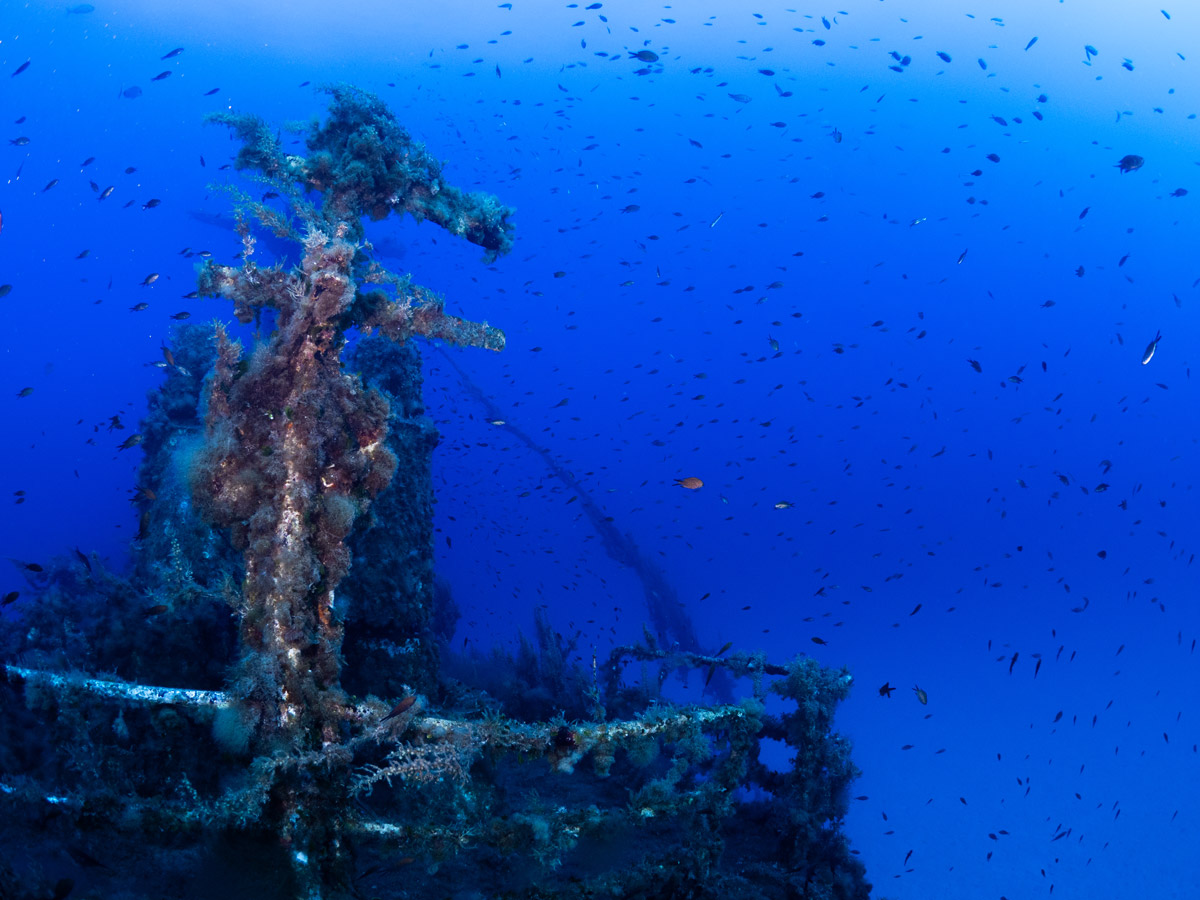
During our dives, we spotted schools of silver jacks, a sting ray, and black damsels, and hit both wrecks and the arch. At the start of June, the water was a fresh 20°C but I (who gets cold in the bath) was comfortable in my trilaminate drysuit, and my buddy was good with a 5mm and hood vest on. The visibility was great, allowing endless views of the panda grass dancing under the sun’s rays.
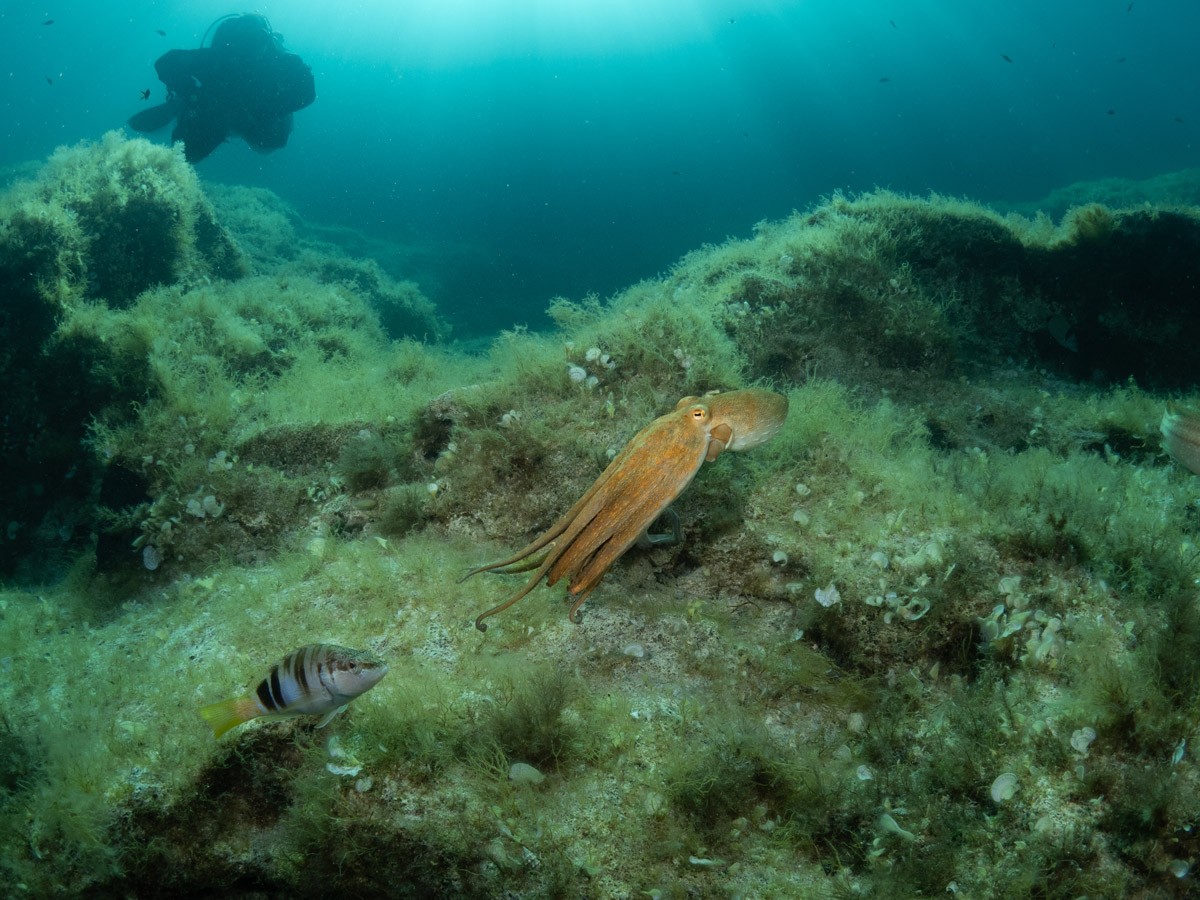
Many say that Gozo is what Malta was 20 or 30 years ago; small towns predominantly surrounded by stone-walled agricultural land and hidden gems of seaside bays. Although less visited, Gozo has over 40 dive sites and has been supported in a similar fashion. In the stunning bay of Xlendi (you’ve got this!) is Gozo Dive St Andrews. This operation has been in the industry for over three decades and has played a big role in diving tourism development along the way, alongside others.
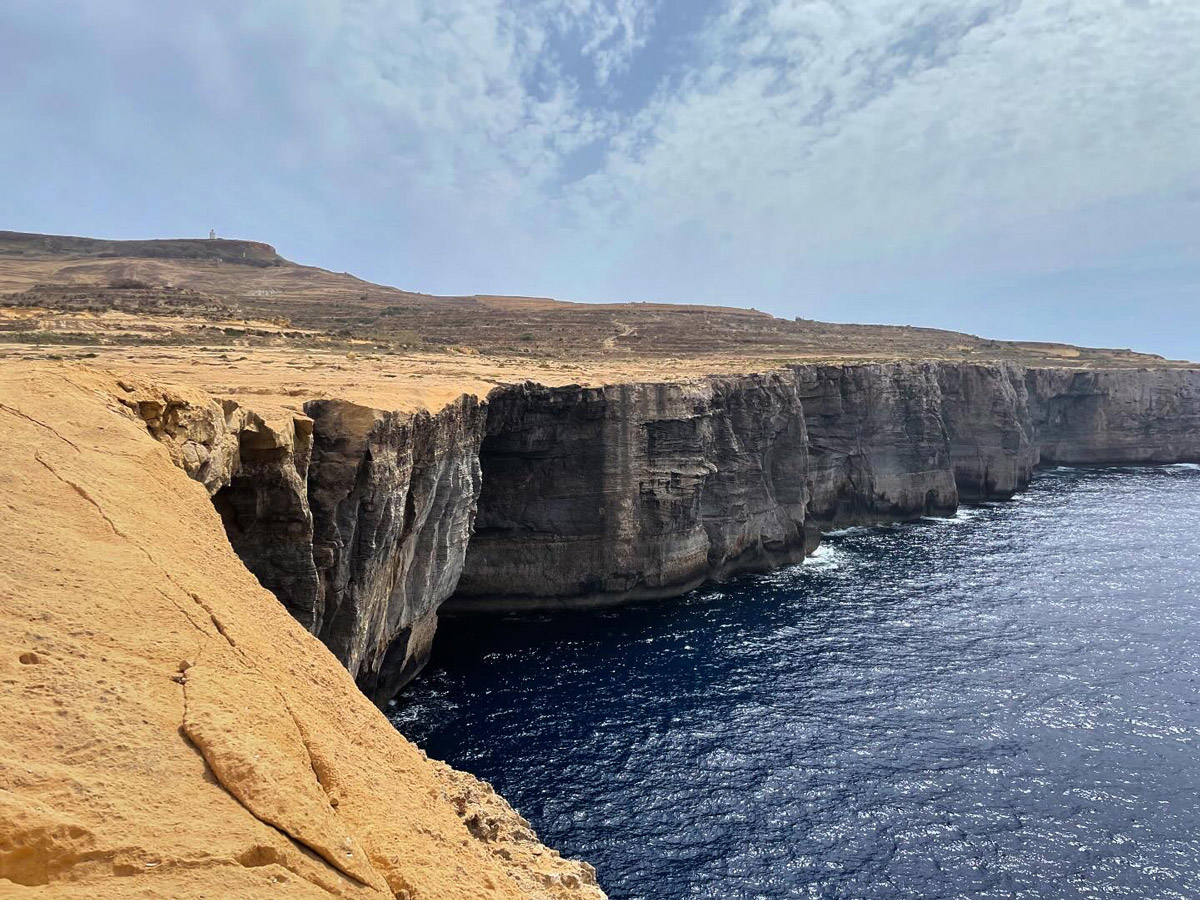
While diving with them, I covered the renowned Blue Hole and collapsed arch, as well as the Inland Sea. These sites are only dive-able when then conditions are right, so we were lucky the wind changed direction on our last diving day.
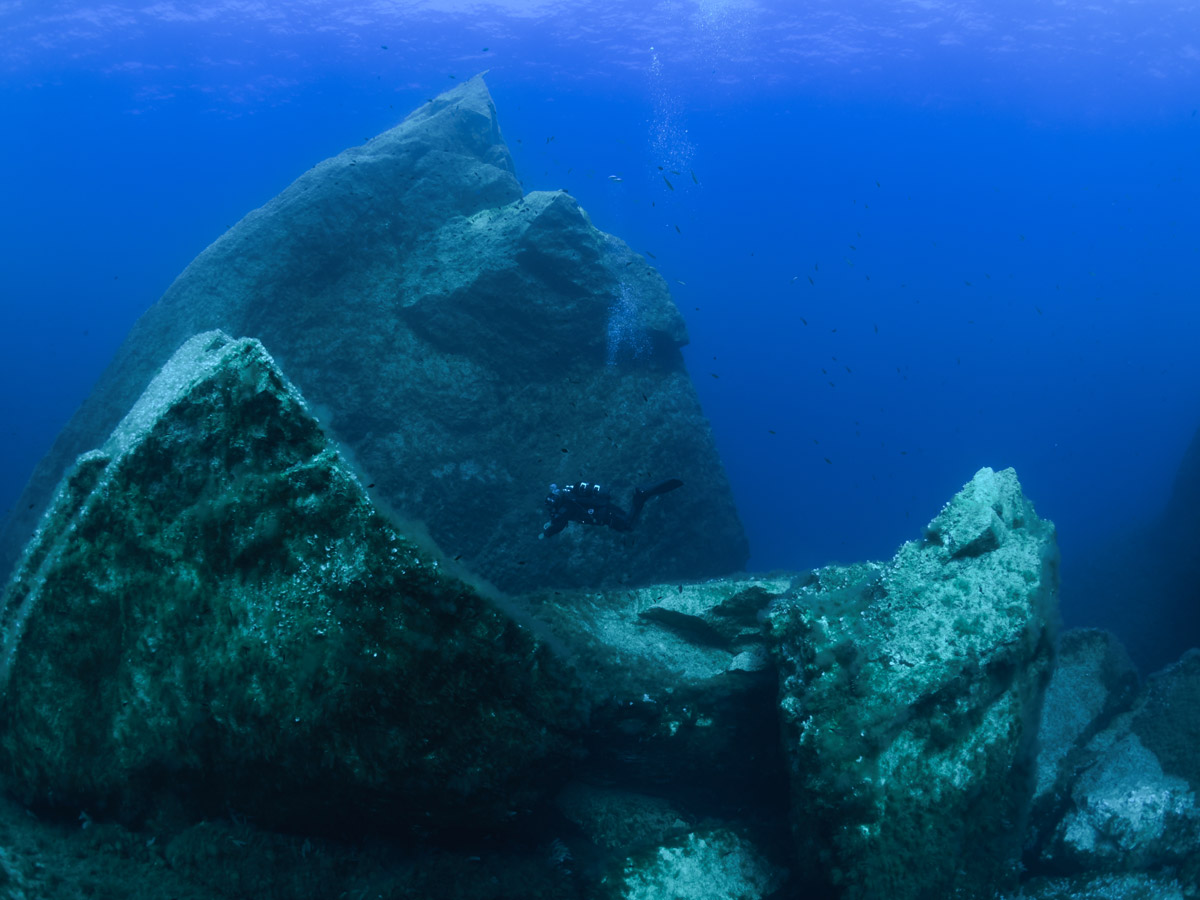
Now, we know the beautiful, azure-kissed Blue Hole, encircled by limestone that looks like it was baked in God’s own Mediterranean kitchen, but what people don’t talk about is the entry/exit point. It’s tough! But again, facilities have been put in place to make it easier and safer. This includes two railed staircases and a path with steps which have been cut into the boulders for you have to cross - even with equipment on, it’s a possible route for the vast majority of people.
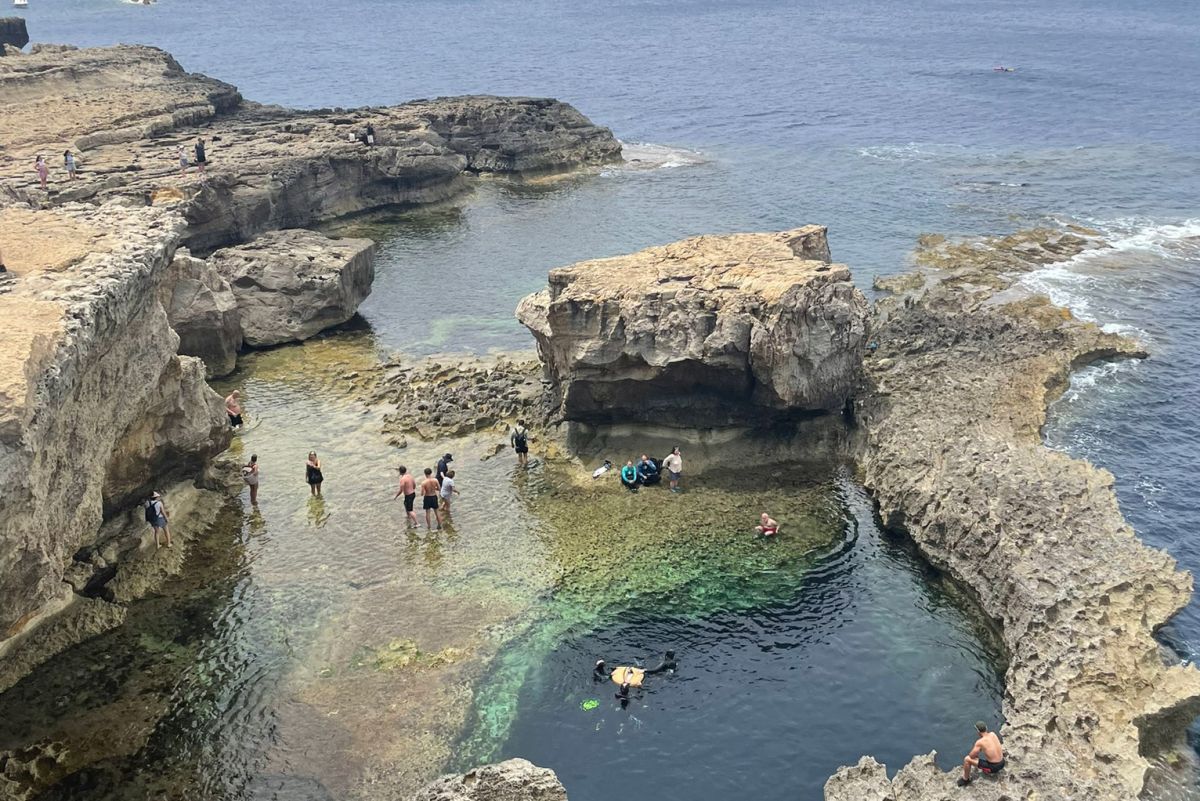
Gozo Dive St Andrews were incredibly supportive and thorough in our brief, talking about different techniques and options. I felt I was in very safe hands. For those who can’t cross the boulders, there are tourist boats which pass through the Azure Window, for a small supplement you can rent one of these and access the site via boat instead ... easy! The site of the collapsed arch is breathtaking: gigantic boulders tower in the crystal-clear water and are truly humbling. As you return to the Blue Hole its beauty shines, sunbeams enter the pool-sized opening at the surface and cascade through the water and the submerged arch sitting at 8-15m. The geological architecture is astounding. We were even treated to a visit from an octopus, which is always a win.
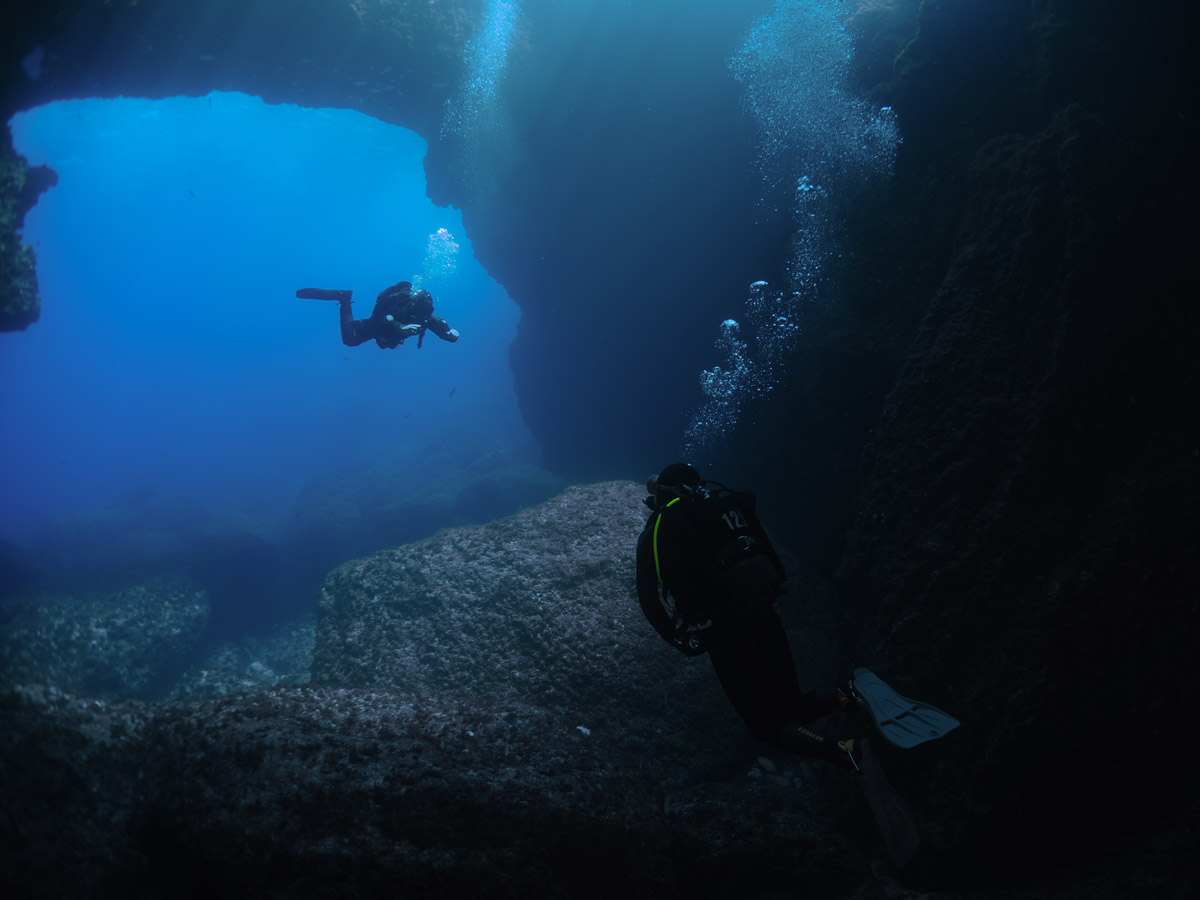
Xlendi is an idyllic bay, and everything is within a few minutes' walk (although some of it is up a steep hill). There are a variety of restaurant options, and there are generous designated swimming bays, in addition to good public transport links. The St Patrick's and San Andrea Hotels offer comfortable and modest accommodation on the waterfront, just a few steps from Gozo Dive St Andrews.
Malta and Gozo continue to improve their diving facilities year-on-year, creating sites to suit divers of all levels. The friendly islands have a rich cultural history and numerous attractions which are well worth exploring when out of the water.
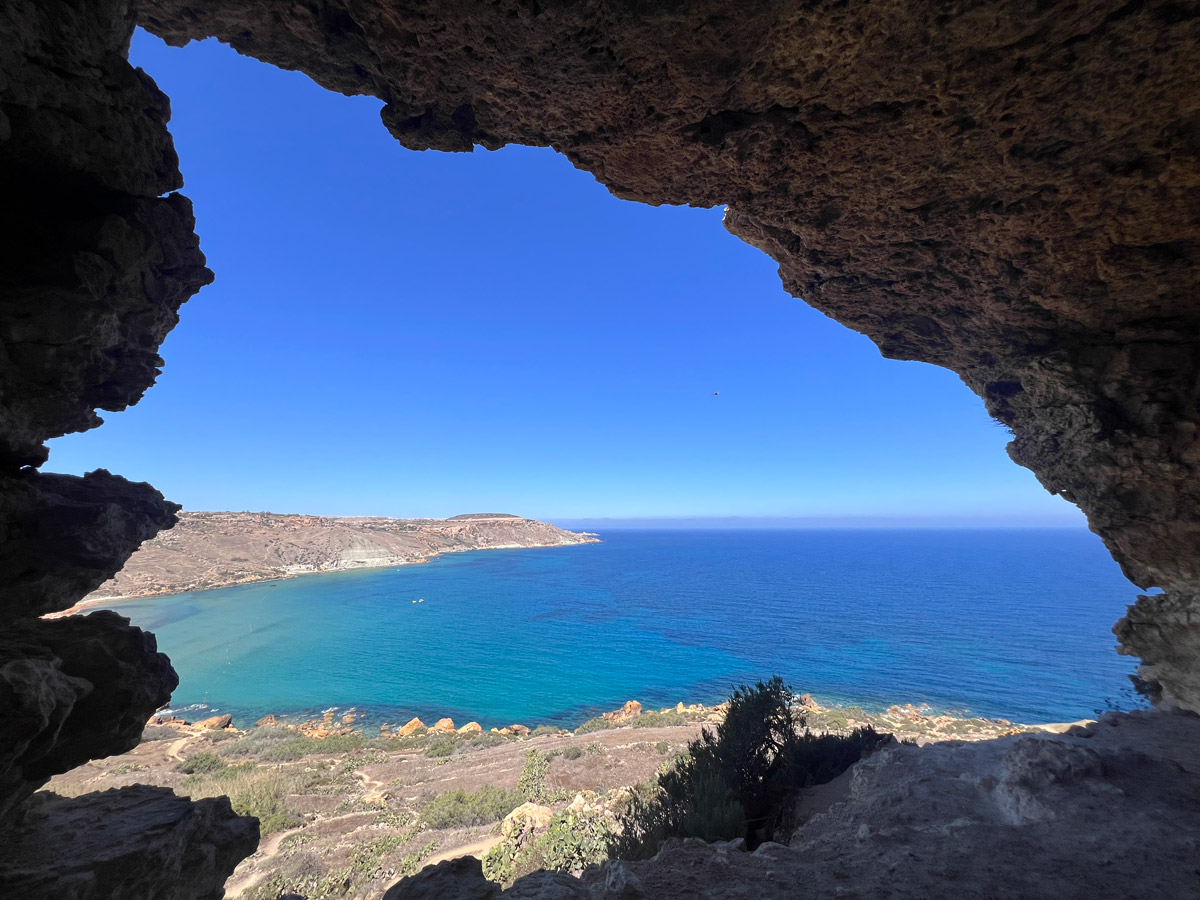
For me, Malta and Gozo are the top diving destinations in Europe, and I can’t thank the dive centres enough!
Find out more about diving holidays in Malta and Gozo, or get in touch with our dive team.
Find a trip
- Resort
- Liveaboard
Malta & Gozo diving is back!
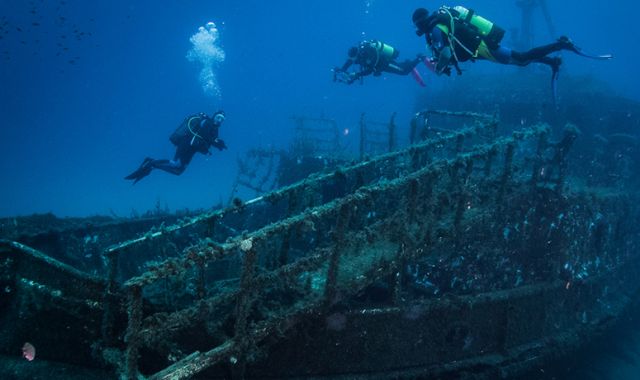
16 Jul 2020
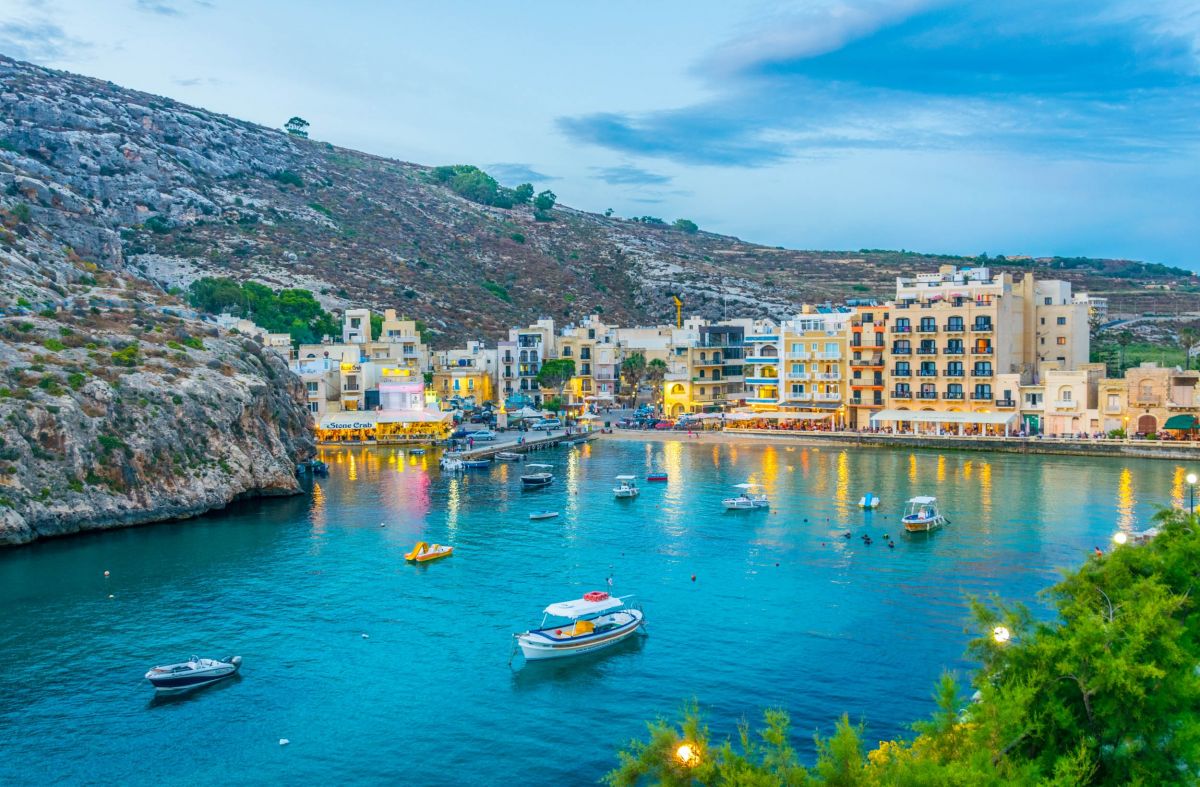
We did not have a lockdown in Malta and were open throughout the pandemic upgrading the premises and preparing for the season. We had many restrictions, but it was actually very nice, more time to do things we enjoy and it felt calmer. Gozo had a break with very few people around and very few cars. It really was great. The environment got a well-deserved break. Friendly dolphins were spotted close to the shore in Comino on several occasions!
Malta has done quite well with battling the virus. We only had two confirmed new cases in the last week and the number of active cases has now gone down to five. Many restrictions have been lifted but there are protocols in place for every sector of the commercial and tourist industry.
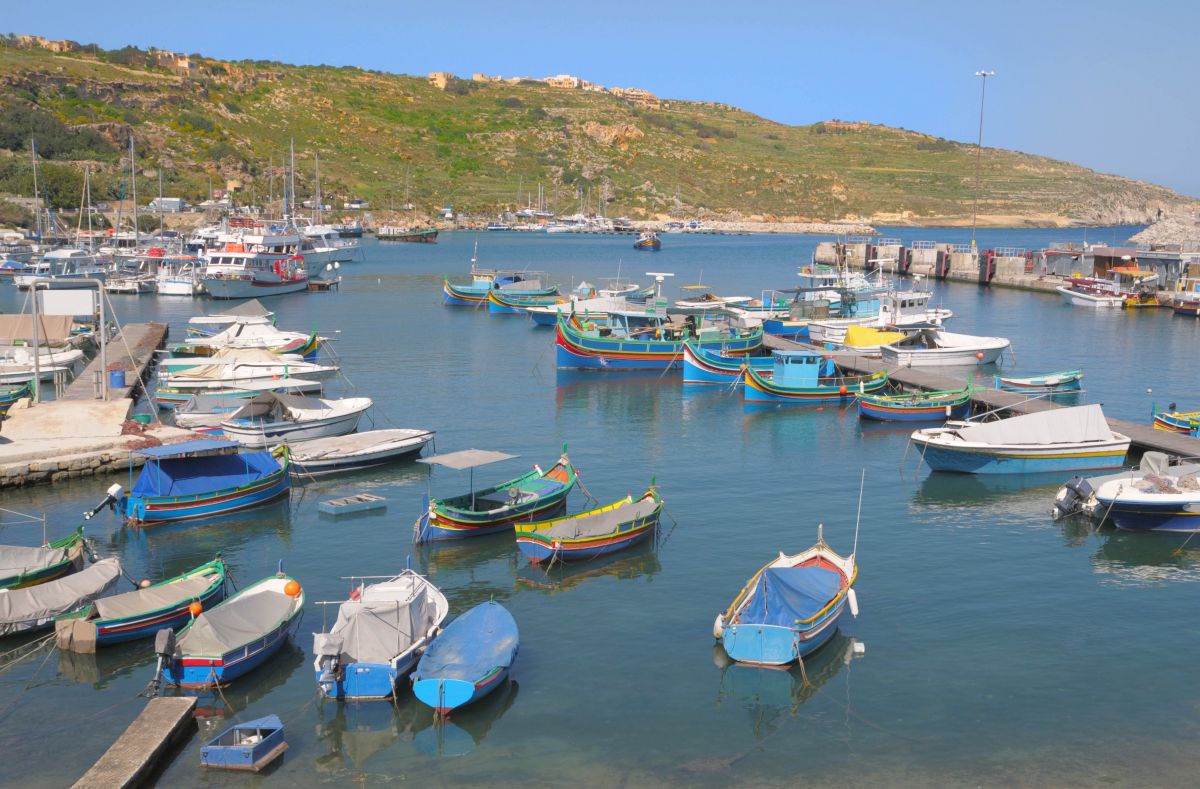
No protocol was issued by the authorities for diving centres so we (Professional Diving Schools Association, Gozo Tourism Association with the help of DAN) got together to make our own based on protocols issued for other sectors and with a bit of common sense. Clients are not allowed to use our shower. The toilets are cleaned with soap and sprayed with disinfectant regularly. Hand sanitiser is provided for all those who enter the shop and crowding in the shop will be avoided by asking people to wait outside. (No crowds so far!). Divers are to keep the same diving equipment for the whole stay and not rinse it daily like we usually do. After use, the rental kit is sprayed with fresh water, allowed to drip dry, later sprayed with disinfectant, then left 3 days hanging in a separate room before being put back in the hire department for other guests to use. Regulators and masks are being dipped in a solution with a strong dose of disinfectant, then rinsed thoroughly before being used by other divers. In restaurants tables are 2 metres apart and people are obliged to wear a mask in certain shops, on buses and in taxis.
I believe that life post Covid will be different to the life we've lived so far. The Covid pandemic forced most busy bodies, or rather busy fools like me to take some downtime and reflect about what's important in life. All of us in tourism are going through what probably the worst financial crisis in the history of our working lives, having to take loans to survive, drastically cut down on expenditure and rethink our business models. However, in my opinion and in a strange way, the pandemic was a godsend for many of us who had time to find ourselves, our families, our homes and appreciate the importance of the simple things in life over the materialistic world we live in.
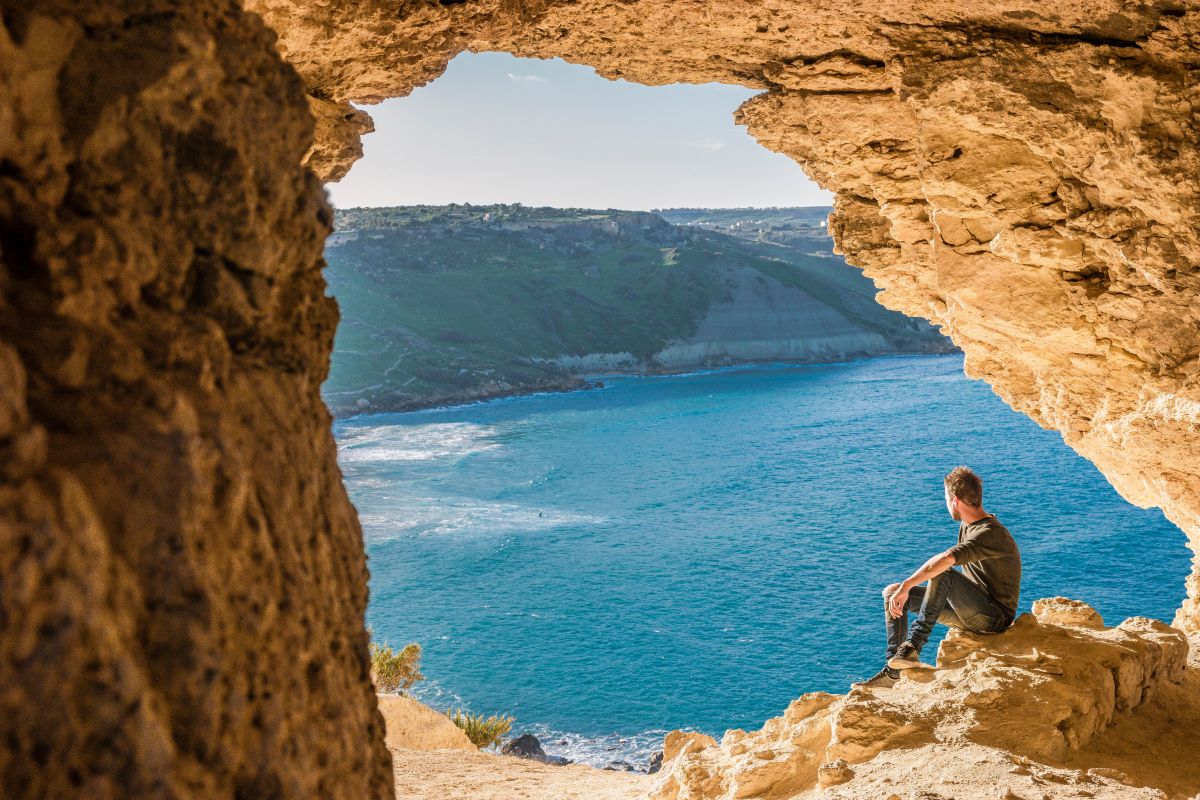
I've always wanted to grow my own vegetables, and this was the year to do it. I don't have a garden, so I used flower pots and got mixed results. My tomatoes were delicious, but my aubergines are miniature versions of the ones I expected to have. I'll do better next year. I've always wanted to go for a daily walk, and this only materialised in the Covid period after a couple of weeks of slowdown and far too many ZOOM parties with family and friends across Europe, far too much food and far too much drink. One Saturday morning I made a conscious decision to go for a long walk and kept it up since. During the Covid weeks I watched more films than I did in the last thirty years and even managed to watch the news every day.
It's over now. As from today the airport is open to most destinations around the world and we're expecting some tourist arrivals. It's time to get back to work but lessons learnt since the pandemic struck will not be forgotten in a hurry. I'm now looking forward to visiting my favourite dive sites, the drop off at Crocodile Rock, the caverns at Wied il-Mielah and of course Comino. The Covid pandemic gave us time to do major upgrades on Divemania, our dive boat and she will go to the water first thing Monday morning. I can't wait. It's hard to put words together that describe how I miss the intensity of our deep blue Mediterranean Sea, the clarity and the underwater scenario. A picture says a thousand words, so, voila, a few pictures of only a few of our dive sites.


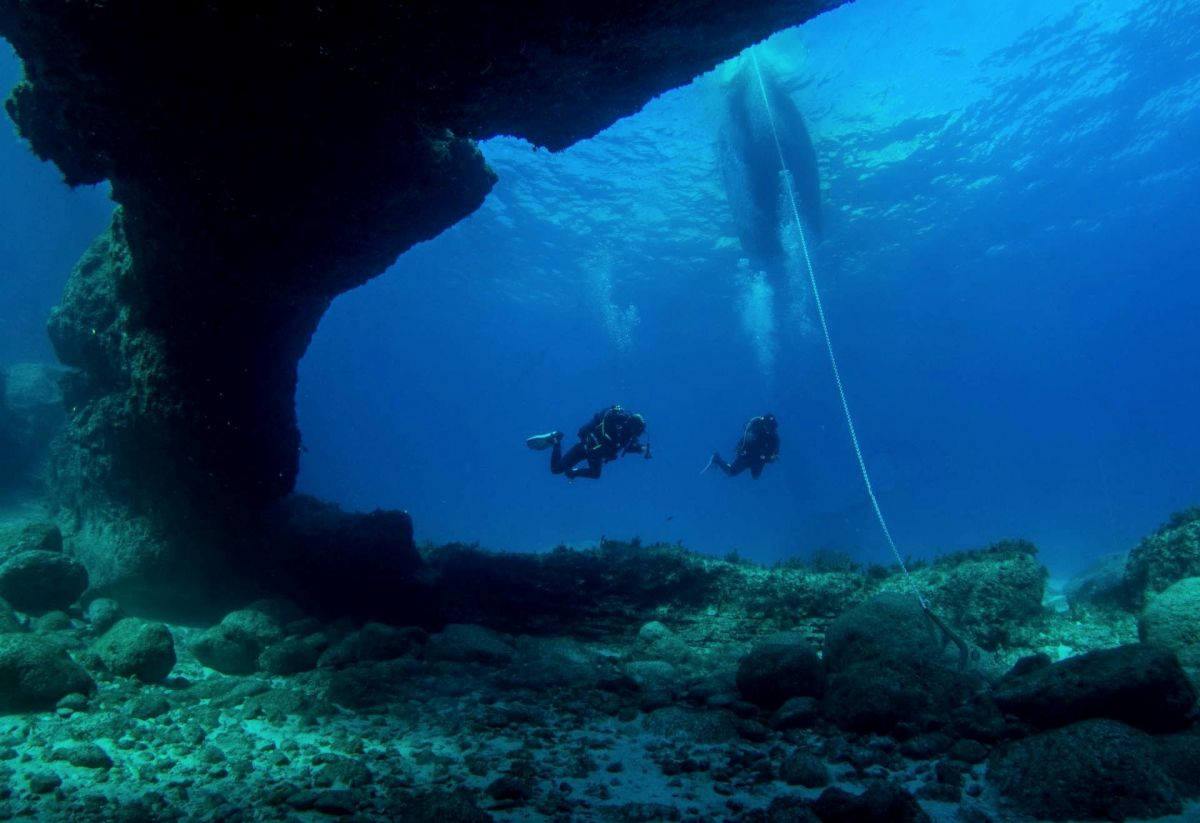
We offer a range of self catering apartments and hotel options for divers on Gozo and neighbouring island Malta. Just three hours from the UK, Malta & Gozo make for a perfect short break. Alternatively, extend your trip to fully explore the delights of both Malta and Gozo on a tailor-made twin centre itinerary.
Speak to the friendly Regaldive team today to begin planning your diving holiday to Malta & Gozo.
Find a trip
- Resort
- Liveaboard
Malta's Top Five Dive Sites
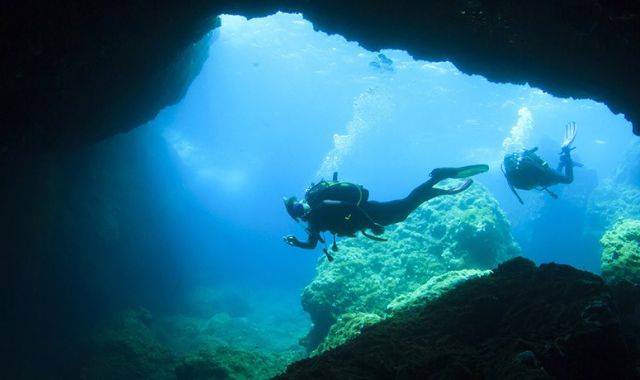
16 Jul 2020
Sheltered bays, natural harbours and cliffs slip beneath some of the Mediterranean's clearest waters to create magnificent shore diving opportunities and underwater topography, while the island is dotted with fascinating shipwrecks and plenty of dive sites for the more experienced.
Here, we share just a few of the archipelago’s fascinating dive sites.
Blue Hole
Regularly voted the best dive of the Mediterranean, this iconic dive site on the west coast of Gozo has been carved out by centuries of wind and wave action. The dive begins in a shallow water shelf sitting atop the famous Blue Hole Cavern. Exiting via a rectangular photogenic archway adorned with golden cup corals, the dive continues to a series of large boulders tumbling down from 5 metres to more than 50 metres, creating fantastic diving opportunities for all levels of divers. One not to be missed.
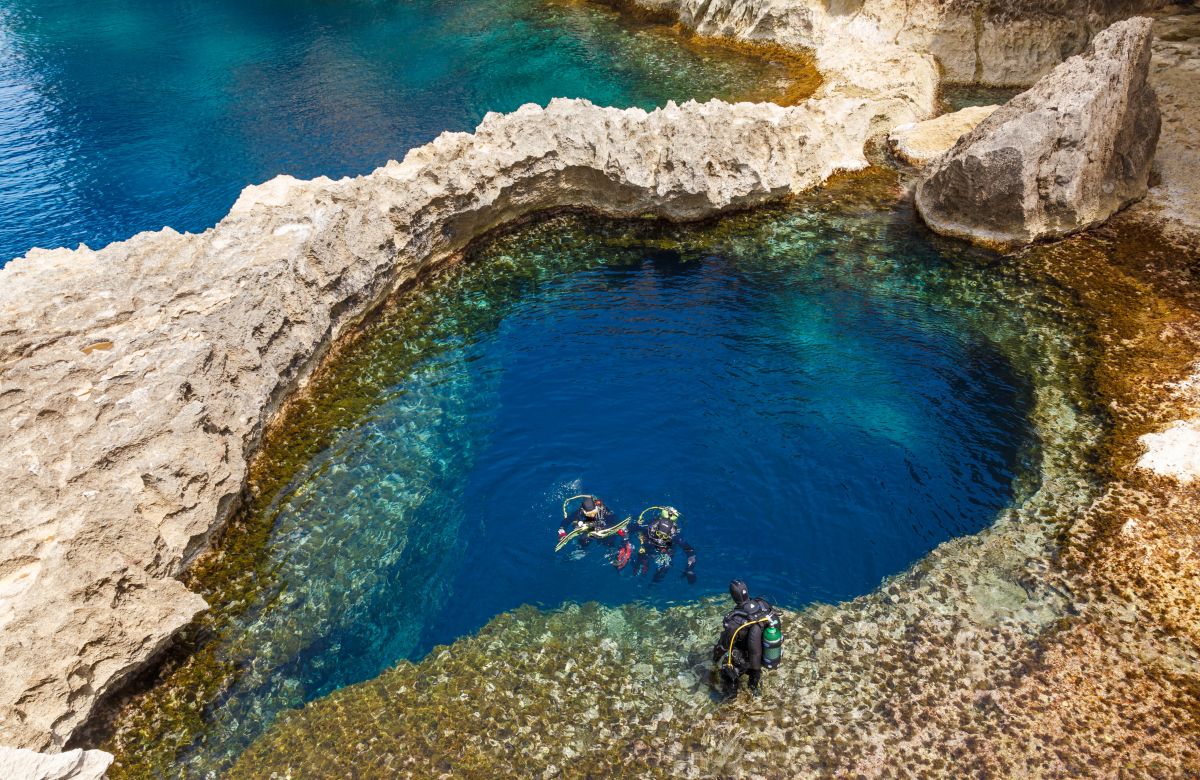
P29
Many wrecks have come to rest at diveable depths in the waters around Malta. The P29 may not be the most iconic (that title likely goes to the Blenheim Bomber) but she could be the most popular. The P29 began life as a German minesweeper and still features her machine gun. In later life, this 62 metre vessel was employed as a patrol boat for the Maltese authorities, before being scuttled. She lies just 150m off the northern coast of Malta and is easily reached.
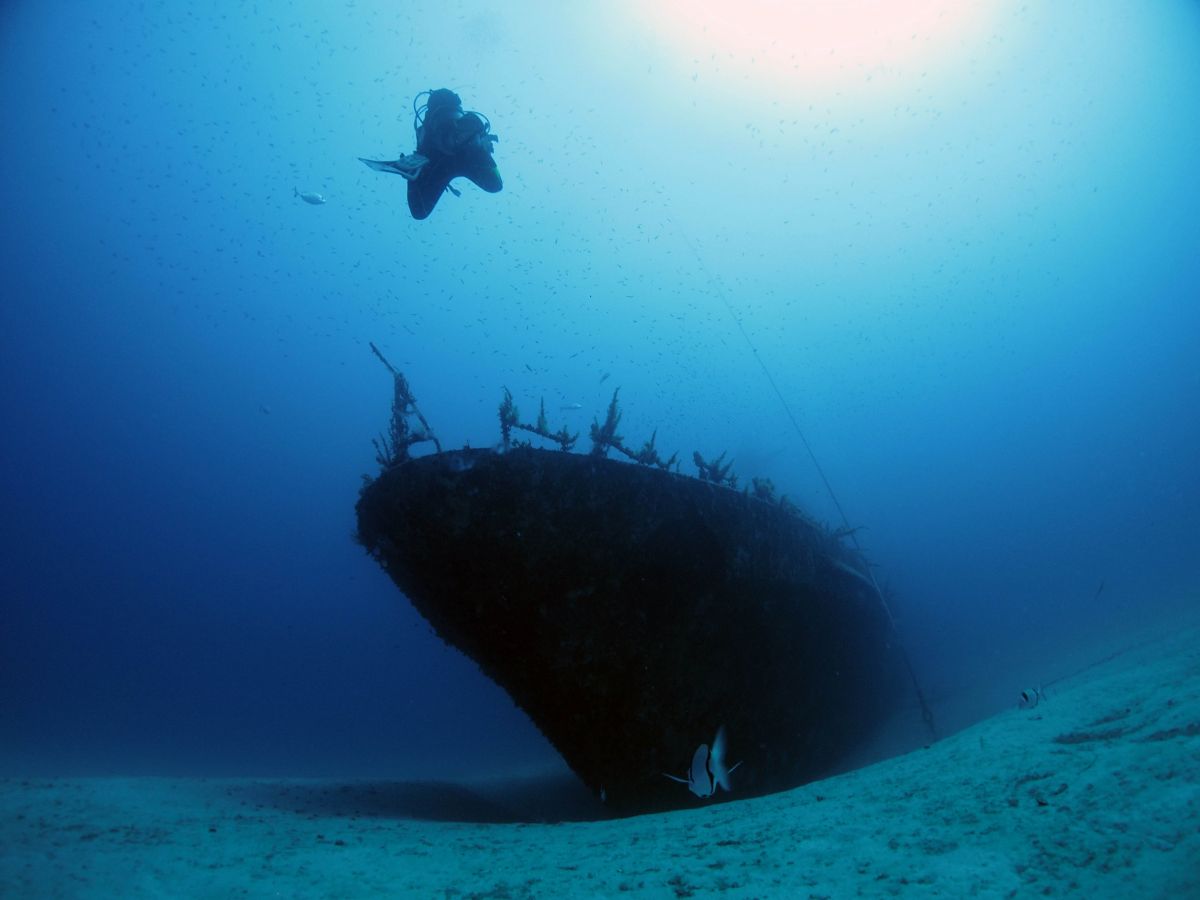
Reqqa Reef
With an exposed location and a tricky entry, this is one for the more experienced diver. The rewards are plentiful however. Descending to 30 metres, and then dropping off again down to 60 metres, this dive site brims with life that dance in the nutrient-rich waters. Divers may encounter schools of dentex in a feeding frenzy, along with large grouper and clouds of smaller marine life. Add in the submerged chimneys and topography, and you have a dive site that challenges and enthrals in equal measure.
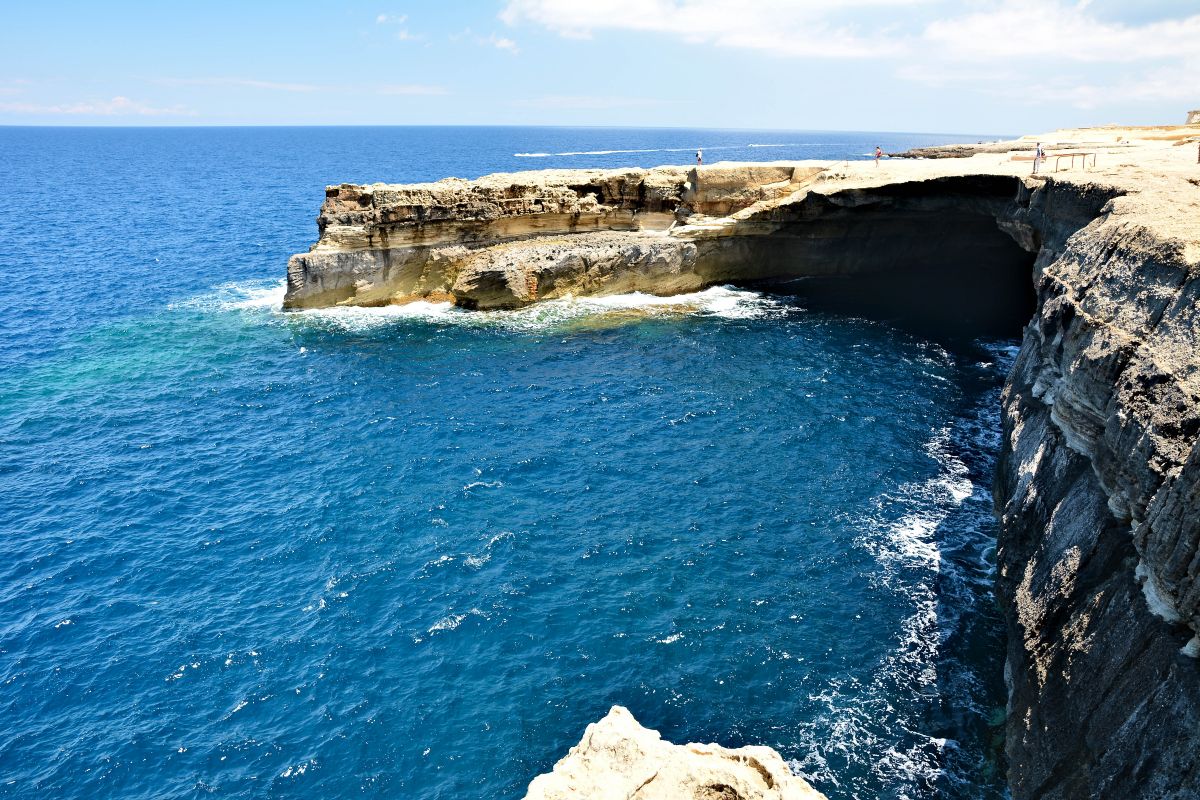
Santa Maria Caves
Malta is spoilt for choice when it comes to fascinating underwater topography, caverns, caves and swim-throughs. Selecting the best is not easy, but the Santa Maria caves on Comino are certainly one of the most popular for good reason. A great dive for all levels of diver, this photogenic dive site offers a multitude of wonderful swim-throughs and caverns and is also rich in marine life. Divers may spot octopus, morays and nudibranch, and cannot fail to spot the schools of banded sea bream that tend to engulf divers. A dive site that always leaves a smile on your face!
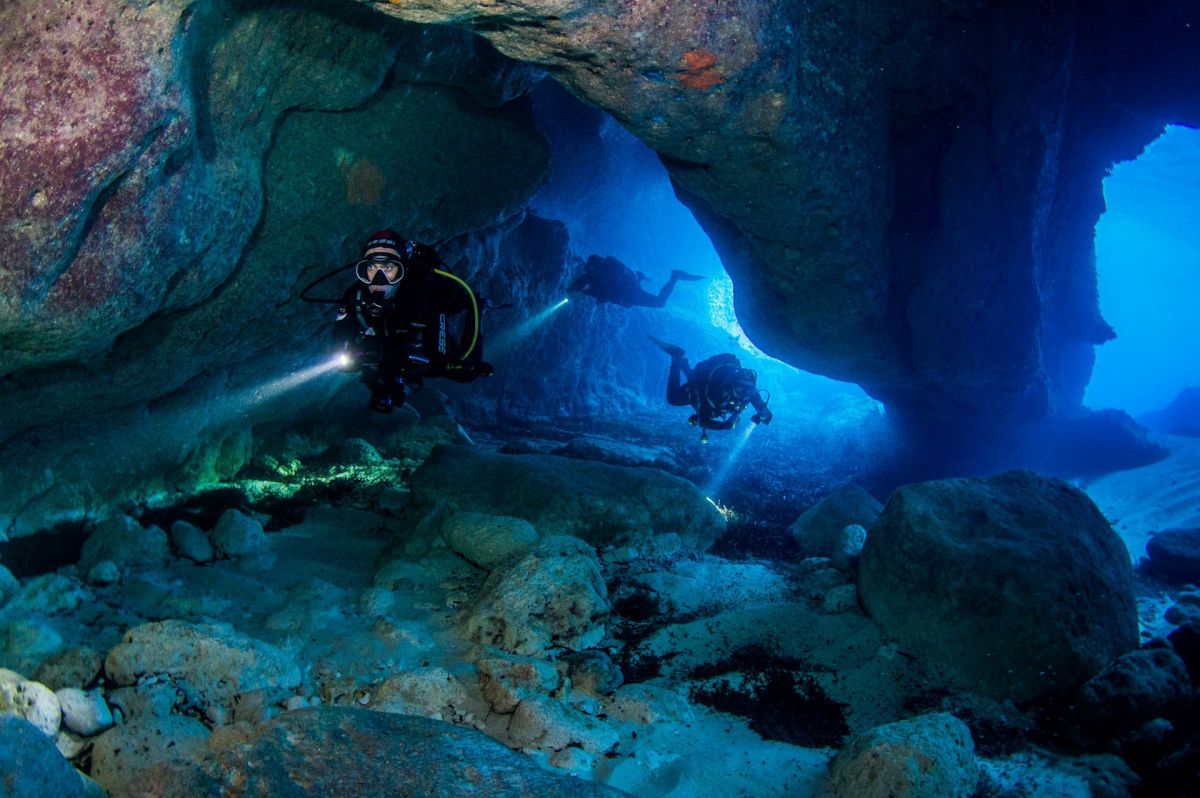
Image by Pete Bullen
Inland sea and tunnel
Undoubtedly one of the most popular dive sites, the inland sea is a natural sea water pool with a deep, narrow, 80 metre long tunnel through the cliff leading to the open sea. White pebbles form a semi-circular beach surrounded by boathouses, one of which was conveniently turned into a café. The sea is deep and most recreational divers dive on the wall far from the seabed, while light from the sun casts dazzling patterns. The Inland Sea’s easy shore access and depth make it perfect for deeper dives for qualified divers.
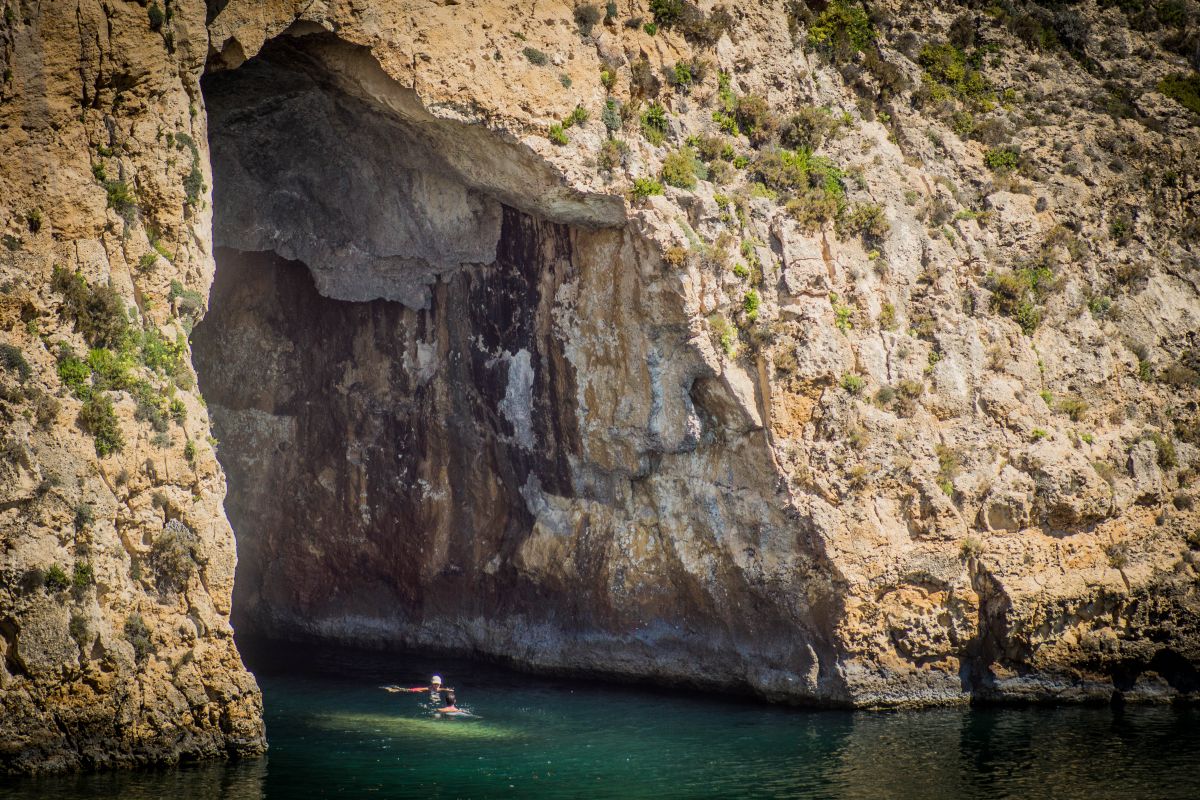
Image by Viewing Malta
Enjoy the fabulous diving of this archipelago from either Malta or Gozo, or extend your trip to combine the two islands. Just a short flight from the UK, Malta, Gozo and Comino make for the ideal summer or autumn diving adventure from the UK.
We feature a range of accommodation options from self-catering apartments to hotels with all amenities, and only work with the most experienced and professional dive centres to ensure a safe and highly enjoyable Maltese adventure.
Contact us to book your diving holiday to Malta.



